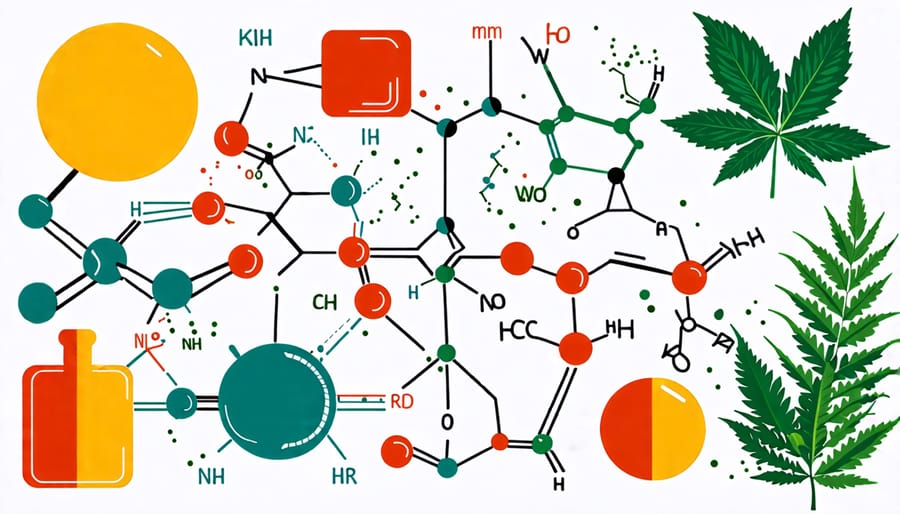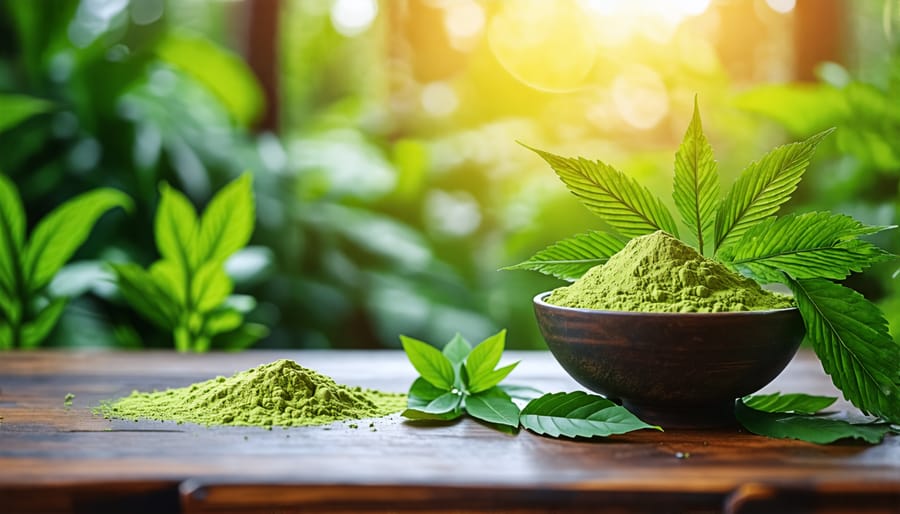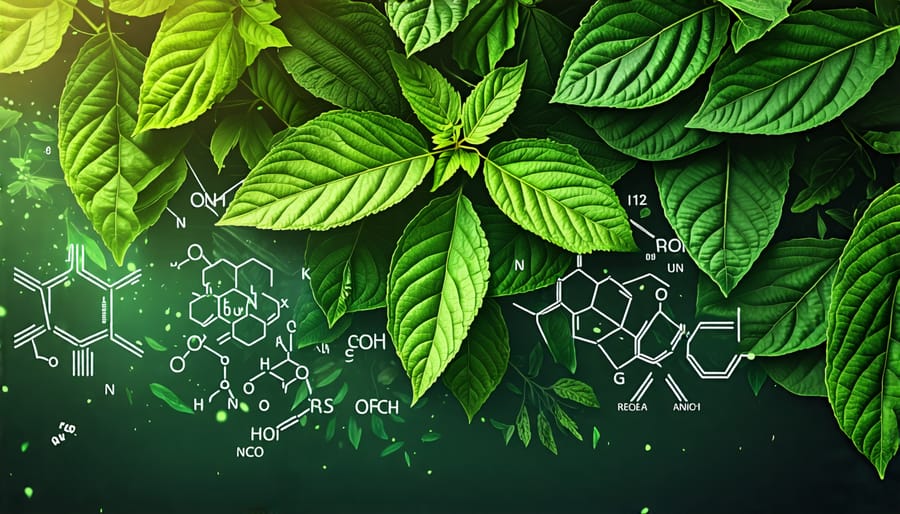The evolving landscape of alternative medicine has brought increased attention to kratom’s potential therapeutic applications. While consumers can buy trainwreck kratom from various vendors, understanding its botanical origins, chemical composition, and role in complementary therapies is crucial for informed decision-making. This comprehensive exploration examines kratom’s place in alternative medicine, from its traditional roots to current scientific research and expert perspectives.
Understanding Kratom: What Is It?
Kratom’s Botanical Background
Kratom, scientifically known as Mitragyna speciosa, is a tropical evergreen tree belonging to the Rubiaceae family, which also encompasses coffee and gardenias. This plant thrives predominantly in the lush rainforests of Southeast Asia, specifically in countries like Thailand, Indonesia, Malaysia, and Papua New Guinea. Understanding kratom’s botanical roots offers an intriguing glimpse into its role as a potential alternative medicinal option.
The leaves of the kratom tree, central to its alternative medicinal applications, are rich in alkaloids, including mitragynine and 7-hydroxymitragynine, which contribute to its purported effects. Given its complex chemical lineage, kratom is sometimes compared to other plants within alternative medicine circles, much like the discussions around marijuana and hemp.
Regionally, kratom has been used for centuries by native communities for its stimulating properties when chewed or made into teas. The plant’s ability to adapt to the specific environmental conditions of Southeast Asian countries makes it uniquely potent and integral to understanding its growing global interest among those looking for herbal alternatives.

Chemical Composition of Kratom
Kratom, a tropical plant native to Southeast Asia, has been the focus of increasing interest due to its unique chemical profile, primarily composed of alkaloids. The most significant of these are mitragynine and 7-hydroxymitragynine, which interact with the body’s opioid receptors. These compounds have been shown to exhibit both stimulant and sedative effects, depending on the dosage consumed. At lower doses, kratom tends to deliver energizing effects similar to caffeine, enhancing alertness and sociability. Conversely, higher doses may induce sedation and relieve pain, akin to traditional opiates.
The interaction of mitragynine and 7-hydroxymitragynine with opioid receptors is of particular interest to medical professionals and researchers exploring alternative pain management solutions, while raising concerns about potential dependency risks. Emerging studies aim to elucidate these effects further and develop comprehensive insights into kratom’s safety and efficacy, particularly within the context of alternative medicine. As the conversation around kratom grows, understanding its chemical composition and physiological impact is crucial for informed decision-making and regulatory considerations.

Kratom in Alternative Medicine: Applications and Benefits
Potential Health Benefits
Kratom has emerged as a subject of intrigue within alternative medicine circles, drawing interest for its potential health benefits, which some users claim range from pain relief to mood enhancement. This herbal supplement, derived from the leaves of the Mitragyna speciosa tree native to Southeast Asia, contains compounds called alkaloids that interact with the body’s opioid receptors. These interactions are believed to mimic the effects of traditional opioids, offering an herbal alternative for pain management. As a result, some advocates highlight kratom’s ability to alleviate chronic pain without the high risk of addiction often associated with conventional opioids.
Furthermore, kratom is reputed to possess mood-enhancing properties. Users have reported experiencing elevated moods and reduced anxiety, which might be attributed to its influence on dopamine and serotonin pathways in the brain. This makes it particularly appealing to those seeking natural means to enhance mental well-being. However, scientific evidence supporting these claims is limited, and the FDA has not approved kratom for any medical uses, citing concerns about its safety and efficacy.
Despite these promising anecdotes, experts remain cautious. Interviews with industry professionals underline the necessity for rigorous scientific evaluations to substantiate kratom’s claims and ensure consumer safety. As interest grows, kratom exemplifies the broader trend of seeking natural health remedies, paralleling discussions within the cannabis industry on how plant-based solutions might benefit well-being.
Kratom’s Role in Complementary Therapies
As the interest in holistic health practices grows, kratom is gaining recognition as a complementary therapy alongside more traditional alternative treatments. Known for its potential to offer pain relief and mood enhancement, kratom is often integrated with therapies like acupuncture, herbal medicine, and mindfulness practices. This blend provides a more comprehensive approach to well-being by harnessing kratom’s alkaloids, which interact with the body’s opioid receptors, potentially alleviating symptoms of pain and enhancing relaxation.
Incorporating kratom into a holistic regimen often involves collaboration between health practitioners knowledgeable in various alternative therapies. This synergy allows individuals to tailor their health care strategies to meet specific needs, drawing on kratom’s naturally occurring compounds to complement other therapeutic modalities. For example, when used in conjunction with yoga or meditation, kratom may facilitate a deeper sense of calm and focus, enriching the mindfulness experience.
Moreover, anecdotal evidence from users and some scientific explorations suggest that kratom could support other herbal supplements, potentially amplifying their effects. This integrative use underscores the importance of informed guidance and evidence-based practices to ensure safety and effectiveness. Adhering to these principles empowers both individuals and practitioners to explore the nuanced role that kratom can play in a holistic healing journey, ensuring it aligns with broader wellness objectives while respecting individual health profiles.

Scientific Analysis: What Does the Research Say?
Clinical Trials and Research
Recent studies exploring kratom’s potential as an alternative medicine reveal a complex picture with promising yet varied results. Kratom, derived from the leaves of the Mitragyna speciosa tree, is often used for pain management, stress reduction, and opioid withdrawal relief. Key research highlights that kratom’s active compounds, primarily mitragynine and 7-hydroxymitragynine, interact with opioid receptors in the brain, suggesting potential therapeutic benefits akin to traditional painkillers but with purportedly lower risk of addiction.
However, clinical trials remain limited, emphasizing the need for more extensive, controlled studies to fully understand its efficacy and safety profile. A few pilot studies have shown promising outcomes in managing chronic pain and improving mood, but these findings are tempered by reports of adverse effects such as dependency and withdrawal symptoms.
Experts urge caution, advocating for a balanced approach that considers both the plant’s potential benefits and the risks associated with its use. Robust scientific inquiry continues to be essential in validating kratom’s role in alternative medicine, offering hope for new therapeutic avenues.
Safety Concerns and Regulations
Kratom, a plant-based product often marketed as an alternative medicine, raises significant safety concerns due to its psychoactive and stimulant properties. Users may experience a range of side effects, from mild, such as nausea and dizziness, to severe, including dependency and hallucinations. Despite these potential risks, regulatory stances across North America remain varied. In the United States, the DEA has listed kratom as a “drug of concern,” but it remains federally legal, with individual states imposing differing restrictions. In Canada, it is illegal to market kratom for human consumption, highlighting concerns about its safety profile. Regulatory bodies like the FDA and CDC warn consumers about the unregulated nature of kratom products, often leading to inconsistent quality and risk of contamination. The divergence in regulations reflects ongoing debates about kratom’s safety and efficacy within the broader context of alternative medicine, prompting both users and professionals to approach its use with caution.
Expert Opinions: Interviews with Industry Professionals
In this section, we delve into the insights of industry professionals who shed light on kratom’s emerging role in alternative medicine. Dr. Emily Carter, a renowned naturopathic physician, describes kratom as “a botanical that has garnered significant attention due to its potential therapeutic benefits.” She emphasizes that while kratom has been used traditionally in Southeast Asia, it’s the recent research illuminating its analgesic and mood-enhancing properties that sparks interest in the Western world.
John Ramirez, a leading figure in the cannabis industry, draws parallels between kratom and cannabis, noting, “Both substances challenge historical stigma to showcase potential as holistic health solutions.” He highlights the need for comprehensive regulatory frameworks that can guide safe use and ensure quality standards, similar to the evolving cannabis sector.
Further insights come from Dr. Lisa Zhang, a pharmacologist focused on plant-based remedies, who emphasizes the importance of science-backed data. “Understanding kratom’s active compounds, such as mitragynine, is crucial,” she explains. Dr. Zhang calls for more robust clinical trials to validate anecdotal claims and ensure users are informed by science rather than speculation.
These expert opinions collectively underscore the complexity and promise of kratom within alternative medicine, advocating for informed exploration grounded in both traditional use and modern science.
Conclusion: The Future of Kratom in Alternative Medicine
Kratom’s role in alternative medicine is evolving as more individuals and professionals recognize its potential benefits and dig deeper into its scientific aspects. As an herb traditionally used in Southeast Asia for its stimulant and analgesic properties, kratom is gaining traction among North American audiences seeking natural therapeutic options. While anecdotal evidence suggests it can aid in pain management and mood enhancement, definitive conclusions require more rigorous scientific studies to ensure safety and efficacy. Experts in the field emphasize the need for comprehensive research that adheres to ethical standards. It is crucial to balance the enthusiasm for kratom with caution, informed by credible, science-backed data. As conversations about kratom’s legal status and regulatory measures continue, its future in alternative medicine seems promising but contingent on increased awareness and understanding. Engaging the cannabis community and industry leaders through responsible dialogue and study can pave the path forward, potentially integrating kratom within conventional therapeutic frameworks.




